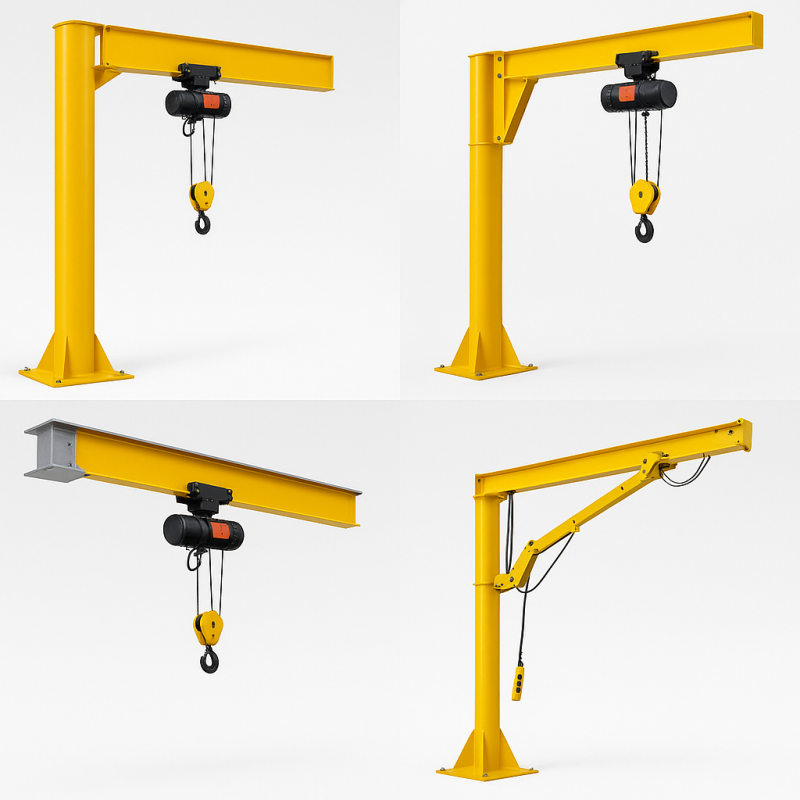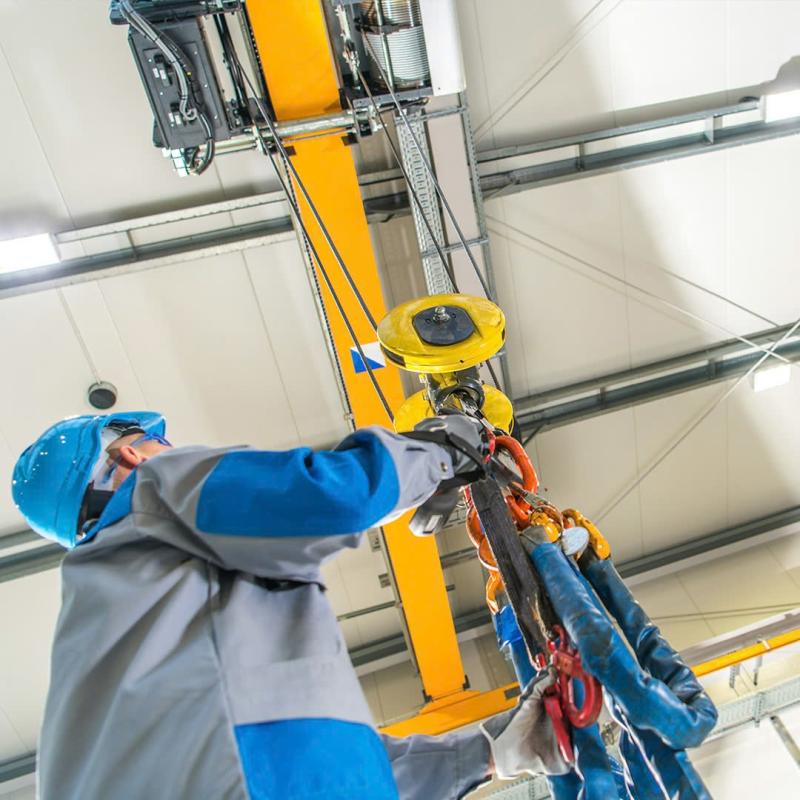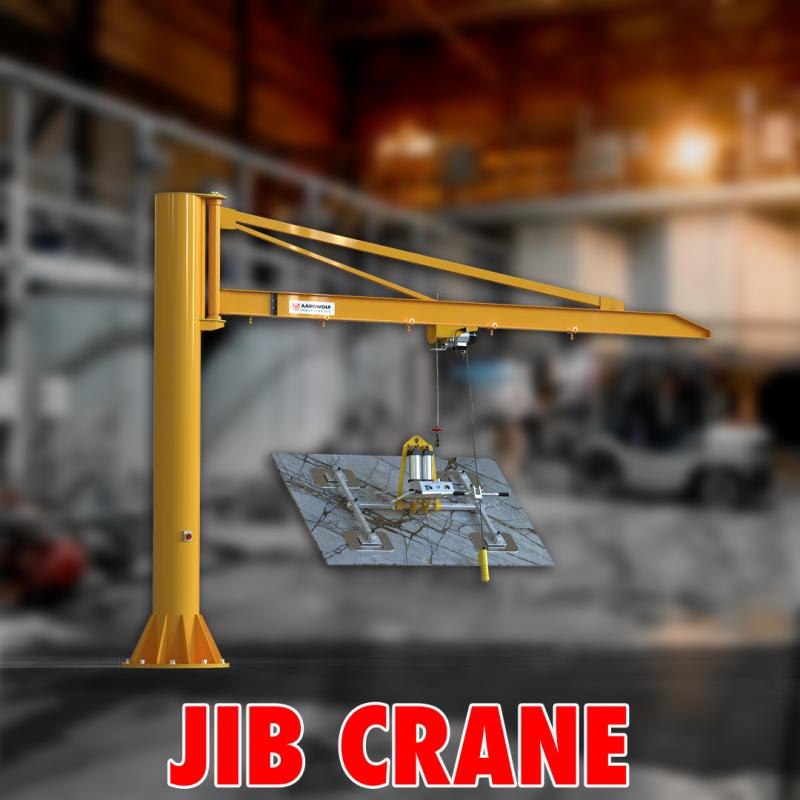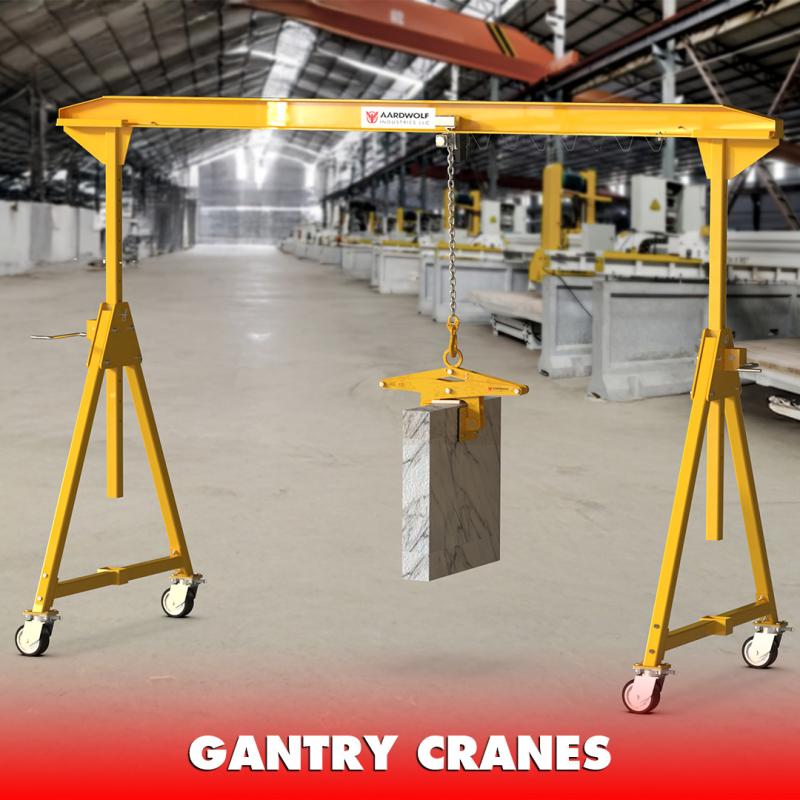



Their adaptability, compact footprint, and ability to enhance workflow efficiency make them a staple in warehouses, manufacturing lines, workshops, and construction yards.
But with so many configurations—like freestanding jib cranes, wall mounted jib cranes, ceiling mounted jib cranes, articulating jib cranes, and pillar jib cranes—choosing the right one for your operation can feel overwhelming.
This article helps you make the best selection by breaking down each crane type, key decision factors, and real-world use cases, all while highlighting the critical role that jib cranes play in modern industrial settings.

The wrong crane can limit productivity, create safety risks, or cost more in installation and maintenance. The right jib crane does more than lift—it transforms your workflow by:
Reducing manual handling injuries
Improving load positioning accuracy
Increasing throughput in production
Saving floor space and reducing congestion
To stay informed on industry trends and crane evolution, check out Trends of Jib Cranes Models.
Before diving into decision-making factors, you should understand the core types of jib cranes available today. Each type serves a different purpose depending on load capacity, layout constraints, and workflow needs.
Freestanding jib cranes are mounted on a reinforced concrete foundation, offering 360° rotation and the highest lifting capacity among jib crane types.
Best for:
Heavy-duty lifting
Outdoor docks
Large, open warehouse zones
Benefits:
Full circular coverage
Independent of existing structures
High versatility in load movement
Wall mounted jib cranes attach to a vertical surface such as a wall or structural column, and typically offer up to 200° rotation.
Best for:
Assembly workstations
Production lines
Facilities with space constraints
Benefits:
Saves floor space
Economical to install
Perfect for repetitive lifting within work cells
Explore system configurations like A Wall-mounted Jib Crane system.
As the name implies, ceiling mounted jib cranes are suspended from building trusses or ceiling structures, enabling unobstructed floor movement.
Best for:
Cleanrooms
High-density production lines
Medical or electronic facilities
Benefits:
Keeps floor area open
Integrates seamlessly with modular layouts
Ideal for light- to medium-duty lifting
Articulating jib cranes feature two pivot points and offer unmatched flexibility when working around obstacles, corners, or tight areas.
Best for:
CNC machine servicing
Workstations with overhead obstructions
Confined fabrication spaces
Benefits:
Reaches into hard-to-access areas
Offers precise load placement
Increases operator safety and control
Learn more about models like AJC-AWM at How many kinds of Jib Crane.
Pillar jib cranes (also known as column-mounted cranes) are bolted to the floor using a steel baseplate and are suitable for medium-capacity tasks.
Best for:
Machine-side operations
Maintenance facilities
Light to moderate repetitive lifting
Benefits:
Easier to install than freestanding cranes
Ideal for small-area deployments
Adaptable for mid-range loads
Discover more about foundational setups in The core installation of Jib Cranes.

Now that you’re familiar with the main types, here’s how to evaluate which jib crane is right for your application.
How much weight will you lift regularly? Overloading a jib crane reduces lifespan and creates safety risks. Choose a model with 20%–30% headroom above your average load.
Different crane types offer varying rotation angles:
360° – Freestanding, ceiling-mounted
180° to 200° – Wall-mounted
Variable – Articulating (can adjust arm angles for tight spots)
Your facility’s layout and structure will often dictate crane type:
Concrete slab → Freestanding or Pillar Jib
Structural wall → Wall-mounted
Ceiling truss → Ceiling-mounted
Calculate the maximum and minimum reach needed from the crane’s centerline. Articulating cranes are best for uneven or multi-station coverage.
Heavy-duty operations with continuous use require robust cranes with motorized trolleys or rotation. Occasional use may justify a more basic manual model.
| Industry | Recommended Crane Type | Why It Fits |
|---|---|---|
| Steel Fabrication | Freestanding or Pillar | Handles heavy loads in open bays |
| Automotive Assembly | Wall Mounted or Articulating | Reaches tight work cells with repetitive motion |
| Aerospace Production | Ceiling Mounted or Articulating | Precision positioning and overhead efficiency |
| Warehousing & Logistics | Freestanding or Wall Mounted | High-speed load transfer across dock and storage zones |
| Small Machine Shops | Pillar or Articulating | Compact, ergonomic lifts for close-range operations |
For application-specific insights, review Main Cases for Different Jib Cranes.

While upfront cost is always a consideration, the total operational efficiency of a jib crane often outweighs initial pricing. Ask:
How much time will be saved in load handling?
How many labor hours can be reduced?
What is the ROI in safety improvements?
Can this crane scale with future production needs?
Modern jib crane systems continue to evolve with trends like:
IoT-enabled controls for load monitoring
Automated swing limits and collision detection
Hybrid crane-vacuum systems for non-porous lifting
Modular boom extensions for longer reach
Stay on top of developments with Trends of Jib Cranes Models.
Choosing the right jib crane for your operation means balancing load requirements, space constraints, structural conditions, and frequency of use. With a wide variety of models—ranging from freestanding and pillar jib cranes to articulating and wall-mounted systems—you’re sure to find a solution that fits.
Investing in the proper crane setup can:
Reduce material handling bottlenecks
Improve worker safety and comfort
Boost overall production throughput
Explore your options with Aardwolf’s lineup, starting with The core installation of Jib Cranes or review real-world success with A Wall-mounted Jib Crane system.
References
1. How to operate a Jib Cranes safely
2. Over brace jib crane wall mounted
4. Is a Jib Crane a Gantry Crane
5. Articulated Jib Crane Wall Mounted
7. Manual Counterbalance Crane
9. Over Braced Jib Crane Column Mounted
Sign up to receive the latest info on new Aardwolf products, special offers and more.
By signing up you agree to receive emails from Aardwolf with news, special offers, promotions and other information. You can unsubscribe at any time.